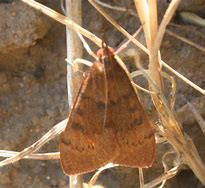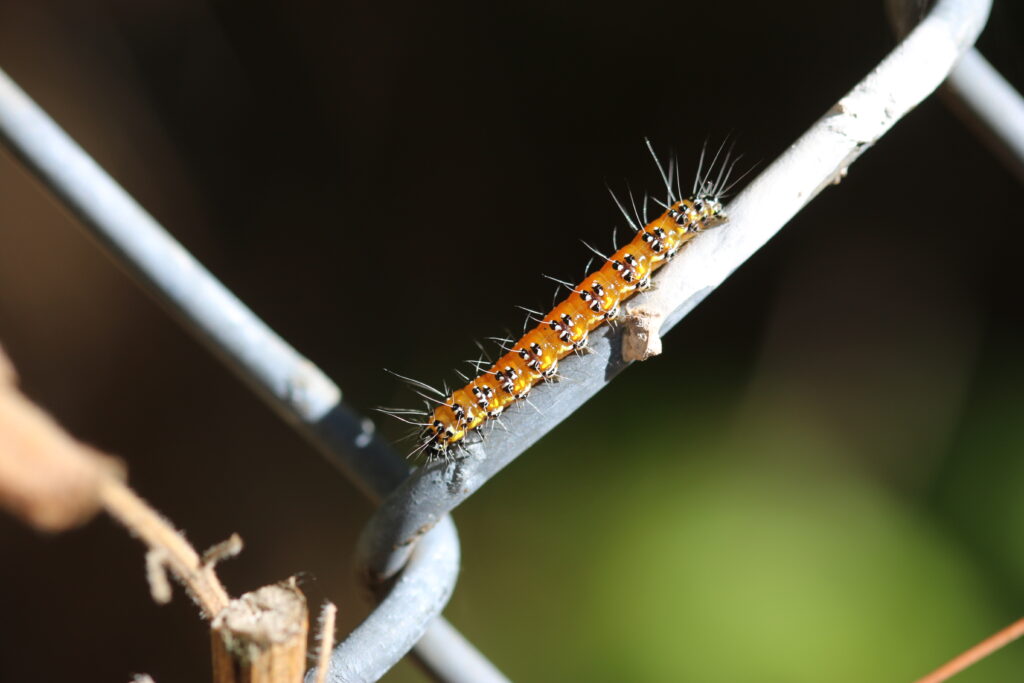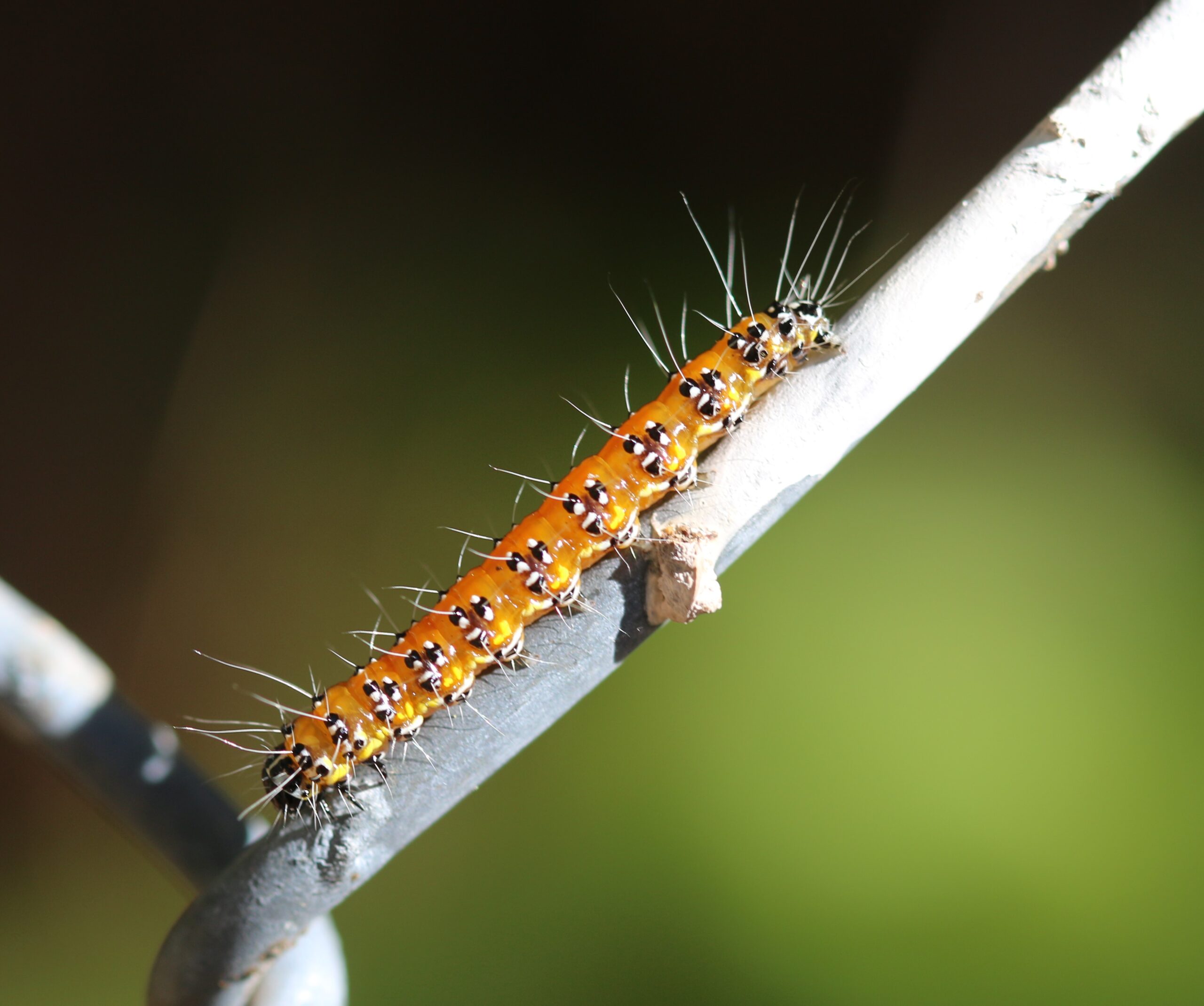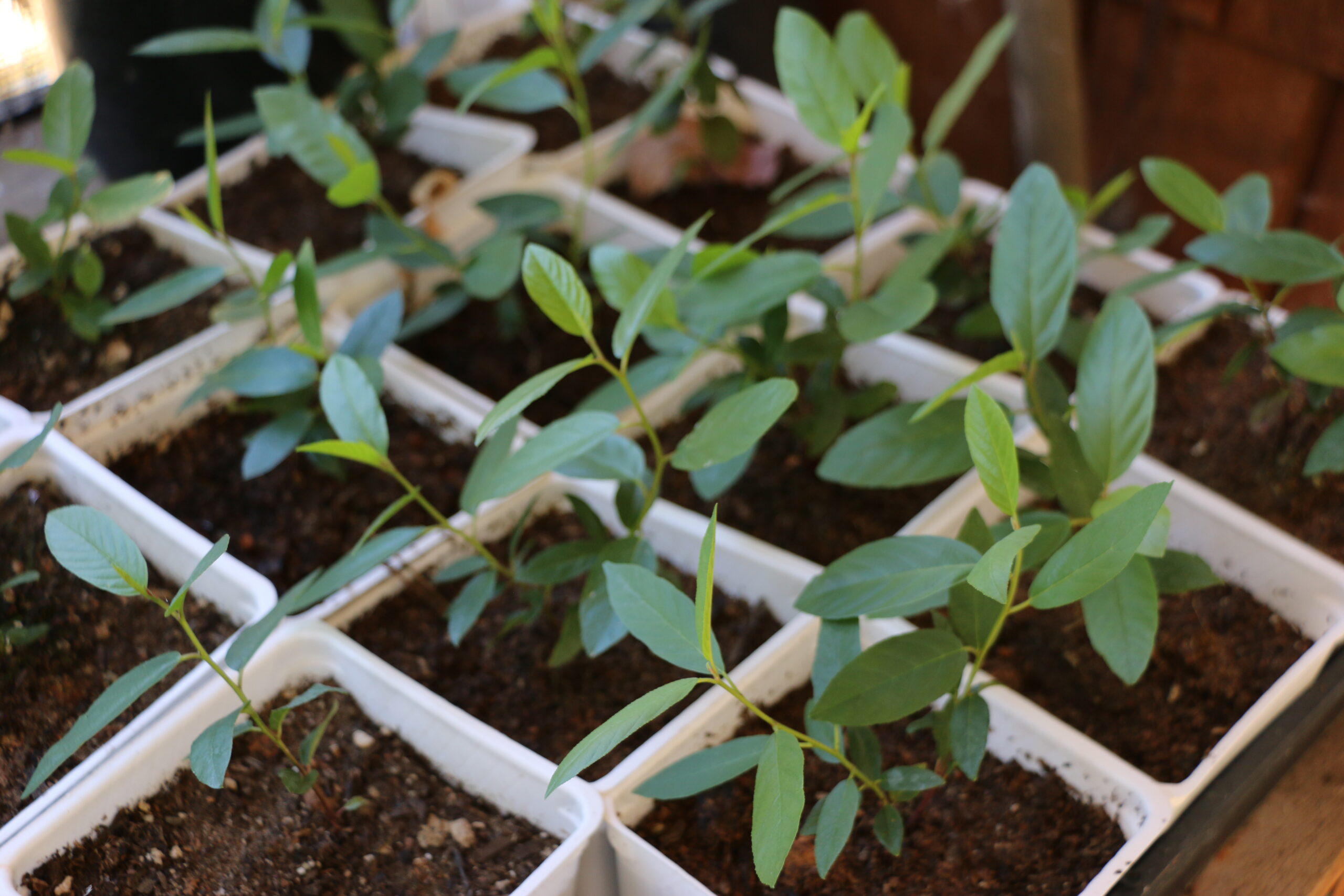Scotch broom (Cytisus scoparius) has long been an invasive species, ranging from Seattle to San Diego and the big island of Hawaii. Never have I seen anything that seemed to like this plant until this past summer when we started noticing much of the broom in our area was totally defoliated.
Enter the Genista Broom Moth, or Sophora Worm – they seem to go by both names.

This small, non-descript moth lays its eggs on Scotch Broom and the larvae come out in force and devour the plants.
While the moth itself is somewhat bland in coloring, the caterpillar is, at least I think, quite colorful. Reaching a size of about 2 inches in length after finishing its multiple instars (the intervals between molts).
The Genista moth (Uresiphita reversalis) was first described in 1854 by Achille Guenee. Probably a native species to Mexico, it spread north and was established in the Los Angeles area by 1930, reaching the San Francisco Bay area by 1980. It has since been recorded across the United States.
Both the larvae and the adult are aposematic, a fancy scientific term for an animal advertising that it is not worth eating or attacking. This may consist of the prey (our little worm and/or moth) being toxic, foul taste or smell, sharp spines, or aggressive behavior. Well, the caterpillar certainly has what looks to be sharp spines! Its coloration is another warning to birds, lizards or others that may want a quick meal. “Stay Away! I am not tasty!! And, you’ll get sick…..”

As spring comes on there are so many different moths and butterflies that inhabit our area that I’m thinking of doing a few posts on our various species to help us to appreciate some of the beautiful insects that are part of the foothills and valleys of the Sacramento region. And while I do not want to plant Scotch Broom in my garden to attract this species, I will be listing host plants for moths and butterflies that we may want to encourage in our home landscapes.
I’ll be going out with my camera over the next few weeks to get photos of whoever flies my way!



